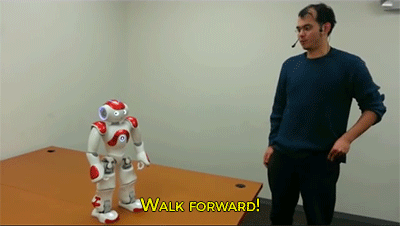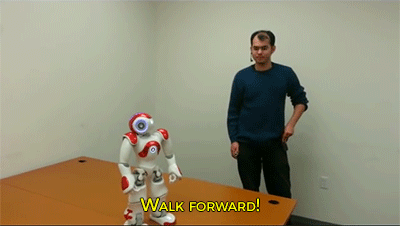Curiositytherover - I Like Space.

More Posts from Curiositytherover and Others
Teaming with Bots!
NSF-funded Northwestern University roboticist Mike Rubenstein is helping NSF’s Science360 Radio pay homage to the National Robotics Initiative this week. We have his Big Picture Science interview about teeny tiny swarming robots called kilobots: 1.usa.gov/1r5QTz9

Self-assembly enables nature to build complex forms, from multicellular organisms to complex animal structures such as flocks of birds, through the interaction of vast numbers of limited and unreliable individuals. Creating this ability in engineered systems poses challenges in the design of both algorithms and physical systems that can operate at such scales. This work demonstrates programmable self-assembly of complex two-dimensional shapes with a thousand-robot swarm. Photo Credit: Michael Rubenstein, Harvard University








Top 10 Humanoid Robots
Read more at: http://futurism.com/images/ http://futurism.com/images/top-10-humanoid-robots/

These are the robots taking our jobs


Li-Fi is 100 times faster than Wi-Fi
What’s next in high-speed Internet? Beams of light, flickering faster than the eye can see. A recent test by New Delhi-based startup Velmenni used “Li-Fi” to transfer data at 1 gigabyte a second. The futuristic tech uses LED lightbulbs to send the high speed data — which could have a great impact on our world.

This is your closest look yet at a Kuiper Belt object



Scientists find “the holy grail of astronomy” after uncovering a galaxy that is made up of mostly dark matter
Mars will one day have a ring system due to Phobos, the planet’s small moon, being crushed by tidal forces
Blue Origin’s New Shepard rocket successfully launches to the edge of space and lands vertically back on Earth
A new exoplanet called GJ1132b is found 39 light-years away, making it the closest Earth-sized exoplanet ever discovered
Researchers make ultra-thin diamond nanothreads, which could help us build a space elevator
A blue Neptune-like exoplanet, which seems to have skies like Earth, is found orbiting a red dwarf star
A staggering 574 newly discovered massive galaxies are revealed that date back to the beginnings of the universe
New research shows that galaxies were far more efficient at making stars during the first 10% of history than they are now
Is It Ok To Hold In Farts…?

NASA Suspends Next Mission to Mars
ASA will not launch its InSight spacecraft to Mars in March as originally planned, because of a leak in a French-built seismometer that is the spacecraft’s primary scientific instrument.
Technicians at CNES, the French space agency, have worked for months to repair a leak in a vacuum seal on the seismometer. OnDecember 22, NASA announced that it would suspend the launch. The delay means that InSight will not go off in 2016, but will have to wait 26 months until the Earth-Mars orbital geometry is once again favourable for launching a mission to the red planet.
InSight’s goal is to probe the structure of the Martian interior by listening to how marsquakes ring through the planet. The mission was designed to determine the size, composition and state of the planet’s core, mantle and crust, which no previous Mars mission has done.
Read more ~ Scientific American
Image: Flaws in the seismometers (at left, in the container on the ground) for NASA’s next Mars lander, InSight, will delay the mission’s launch by at least two years. Credit: NASA/JPL-Caltech





Scientists Are Teaching This Robot To Say “No” Humans - watch the full video
-
 charlesh55 liked this · 8 years ago
charlesh55 liked this · 8 years ago -
 lordcias00 liked this · 8 years ago
lordcias00 liked this · 8 years ago -
 curiositytherover reblogged this · 8 years ago
curiositytherover reblogged this · 8 years ago -
 esgaril liked this · 8 years ago
esgaril liked this · 8 years ago -
 pionicorg reblogged this · 8 years ago
pionicorg reblogged this · 8 years ago
